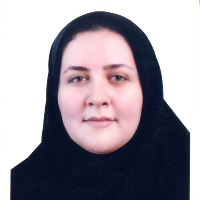Analysis of Factors Affecting the Vulnerability of Arsbaran Protected Area and Development of Management Strategies Using the DPSIR Model
Protected areas are among the most important and effective areas in the world that have been established to protect biodiversity. The use of international methods in the management of protected areas will make it possible to achieve sustainable development along with maximum protection of biodiversity. Arsbaran protected area is one of the most valuable natural resources of Iran in terms of plant and animal species and one of the nine biosphere regions of Iran. This descriptive analytical study was done to evaluate the vulnerability of Arasbaran protected area using the DPSIR model and to provide management solutions. Using the DPSIR model, driving force, pressure, situation, effect and response, threats and values of the region and the relationship between them were investigated and evaluated. Then, strategies were presented in the form of possible responses to each of the components of the DPSIR model. Eight main driving forces are population growth, tourism development, development of communication routes, animal husbandry activities, development of rural settlements, development of agricultural activities, Songun copper mining factory, and lack of coherent management for the identification area. Considering them, the pressures, situation and effects of the region were identified. The results showed that in Arsbaran protected area, the greatest impacts of regional threats on ecological values, including the loss of shrubs and trees, wildlife habitats, and the reduction of biodiversity and cultural values, are being subjected to the supports of UNESCO Environmental Protection Organization and placed at the disposal of the Human and Biosphere Program. They cause the most intensive damages to the region in terms of vulnerability, destruction and change of land use, deforestation and animal husbandry. At the end, management strategies for facing threatening factors were presented.
-
Develop of the management strategies using the new vulnerability assessment method and DPSIR model in wetland ecosystems (Case study: Lahijan Amirkalaye wetland
Sheyda Rostamifar, Seyedeh *
Journal of Natural Environment, -
Forest Risk Fire Zoning using an Integrated Method of Artificial Neural Network and Spatial Information System (Murray Study: Shimbar Protected Area)
Nafiseh Salehi, Solmaz Dashti*, Sina Atarroshan, Ahad Nazarpour, Neamatollah Jaafarzadeh
Environmental Erosion Researches,


